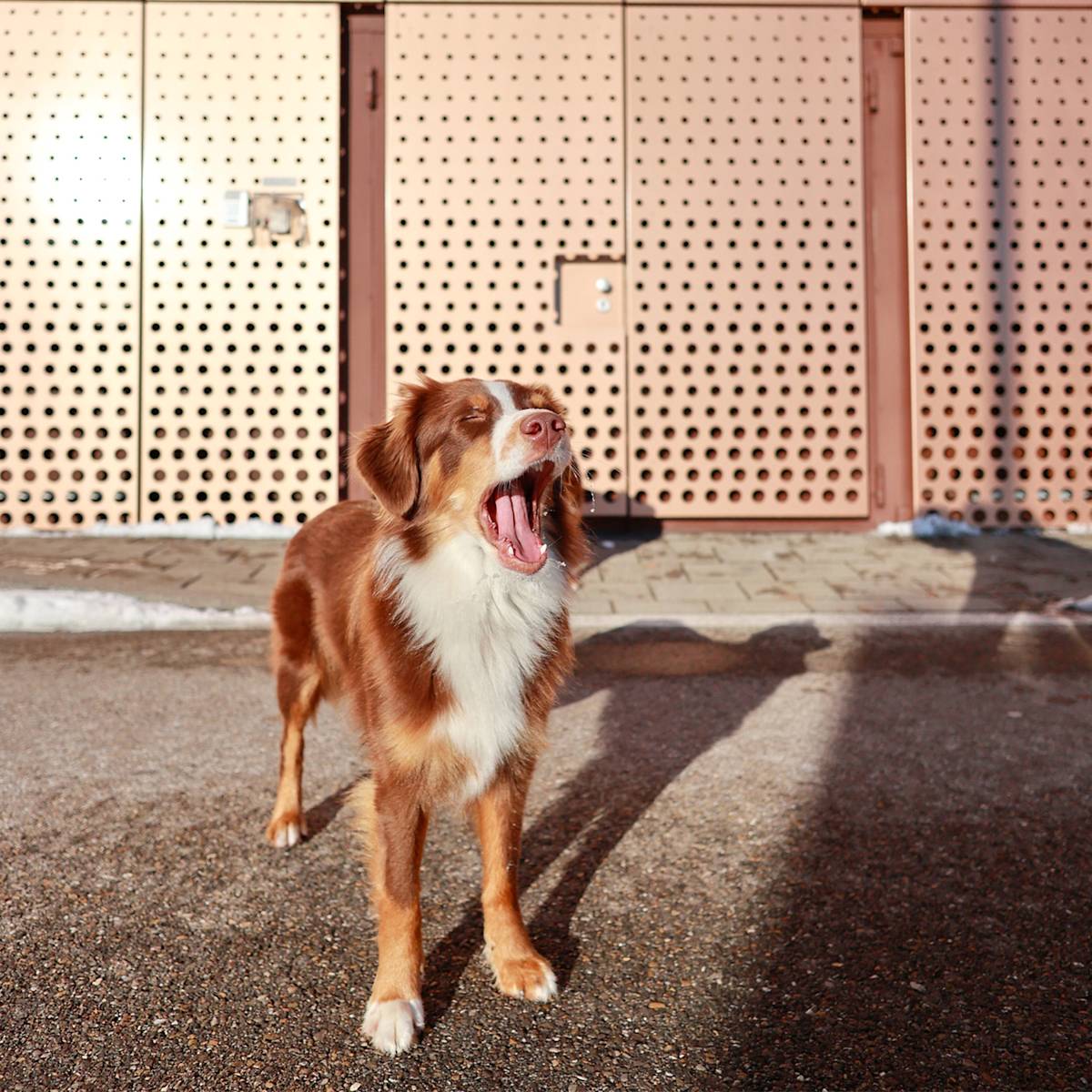Is Your Dog Relaxed or Bored?
It’s a dog’s life - we often say it, as we watch them lazing around most of the day. Snoozing after breakfast and snoring the evening away. But when you’re seeing your dog lying quietly on the floor or stretched out on the sofa, eyes half-closed, not causing a stir - is it as lovely as it first seems? Are they genuinely resting, or silently wishing someone - anyone - would give them something to do?
Distinguishing between a truly relaxed dog and one who is quietly bored - or perhaps even shutdown - can be surprisingly tricky. Dogs aren’t robots - so stillness can mean many different things. Some dogs lie down because they feel completely content, while others do so because they’ve given up on their needs being met. Understanding the difference is key to keeping your dog happy, healthy, and mentally fulfilled - as well as ensuring your strong bond.
Genuine relaxation is going to be physically shown through a combination of body language and their rate of breathing - and it can rely heavily on their environment, and emotional security. You may notice that a relaxed dog’s body feels soft and loose rather than tense, with muscles appearing floppy and jaws slightly relaxed. Their breathing is slow and steady, occasionally punctuated by a contented sigh. Posture can vary - some dogs lie on their sides, others curl up loosely, and some sprawl out upside down with no modesty for displaying parts of their body we might prefer hidden. Comfort matters more than symmetry, and shifting positions to find a perfect spot is often a sign of contentment rather than anxiety. Even subtle things like gentle tail movements or a soft glance when you move around the room can signal that your dog is calm - that they’re only engaged in a relaxed, rather than anxious, way.
It’s important to remember that relaxation doesn’t look the same in every dog. Breed, personality, age, and daily experiences all play a role. A working dog, who perhaps lives most of their day externally to the actual home, might appear more active when within the home, while a sighthound may spend most of the day napping without a care. Herding breeds, on the other hand, often need mental stimulation before they can truly settle. Building a personal understanding of what relaxation looks like in your dog is the best way to interpret their body language accurately.
How much do you spend on your pet per year?
Boredom, on the other hand, often shows up in ways that can range from subtle to unmistakably disruptive. A dog who is bored may pace, wander, or shift positions frequently, sometimes fixating on a single spot or object. They may engage in attention-seeking behaviours, nudging your hand, whining, or repeatedly dropping toys at your feet just to get a reaction. In some cases, boredom manifests as destructive behaviour: chewing furniture, raiding bins, or tearing up blankets. Some dogs even sleep excessively, not out of contentment, but simply because nothing else is happening. And when a small spark of excitement occurs - like the sound of keys jangling or a visitor arriving - bored dogs often explode with energy, as though all their pent-up stimulation is released at once.
Stillness isn’t always what it seems. A dog lying quietly is not necessarily relaxed. Sometimes, apparent calmness is a sign of stress or learned helplessness, particularly if a dog has learned that expressing their needs is futile. Freezing in place can indicate discomfort or fear rather than serenity, and an over-tired or overstimulated dog may collapse into stillness, body stiff and breathing shallow. Pain, anxiety, or under-stimulation can also make a dog lie quietly without actually feeling calm. That’s why context is crucial when interpreting your dog’s behaviour.
So how can you tell the difference between relaxation and boredom? Observation is key. Start by watching your dog’s body language: are they melting into the surface or holding tension? Are their eyes soft or wide? Are their muscles relaxed or rigid? Pay attention to how they transition between positions - a relaxed dog moves slowly and comfortably, while a stressed or bored dog may get up and down repeatedly.
Think about their recent day: have they had sufficient exercise, mental stimulation, or social interaction? A dog who has had all their needs met is much more likely to be truly relaxed. Gentle check-ins can also help; a relaxed dog will glance over calmly or wag a little, while a bored dog may leap up excitedly or nudge you for attention.
Understanding patterns over time is more valuable than judging a single moment. One quiet afternoon does not necessarily indicate chronic boredom, but repeated restlessness, destructiveness, or attention-seeking is a sign that something may be missing. At that point, it’s helpful to introduce activities that provide both mental and physical enrichment. Scent games, puzzle feeders, or safe chew toys can occupy your dog’s mind and help them feel fulfilled. Walks that allow for sniffing, exploration, or route variation provide both stimulation and an outlet for natural ‘dog behaviours’. Structured downtime - such as teaching a calming settle on a mat or providing a consistent resting spot - may help some dogs learn how to relax safely. Social interaction, gentle play, and cuddle sessions (if your dog is happy with touch) also enrich your dog’s day and strengthen your bond.
Sometimes, overstimulation is the culprit. Sometimes less is more, when it comes to having a rested dog. A dog who is constantly on the go, perhaps due to your own routine or spending time in a daycare environment, may struggle to relax even when nothing is happening. In these cases, calm enrichment and predictable routines can help reduce tension and create a peaceful environment. Observing when boredom or restlessness tends to occur can help you adjust your dog’s daily schedule, ensuring they receive activity and mental engagement at the right times. And, in the short term, enforced quiet times in the home can help your dog to settle and rest. If boredom or apparent stress continues despite your best efforts, it’s worth consulting a force-free behaviourist or veterinarian to rule out underlying medical or emotional issues.
Ultimately, distinguishing between a relaxed dog and a bored dog is about paying attention, understanding context, and responding thoughtfully. Relaxation manifests as softness, ease, and emotional comfort, while boredom often appears as restlessness, attention-seeking, or disengagement. Stillness alone is not a reliable indicator - your dog’s signals are influenced by breed, personality, physical and emotional health, as well as that day’s experiences. By observing patterns, and supporting your dog’s physical and emotional needs, you can help them feel both fulfilled and genuinely calm.
A dog who is truly relaxed will rest easily, enjoying their environment and your presence without seeking constant stimulation. A dog who is bored may appear still at first but will eventually seek out interaction, movement, or mischief. Learning to read your dog’s cues not only helps you provide better care but also deepens the bond you share, creating a household where both of you can enjoy calm, happy, and engaged companionship.


